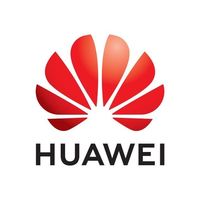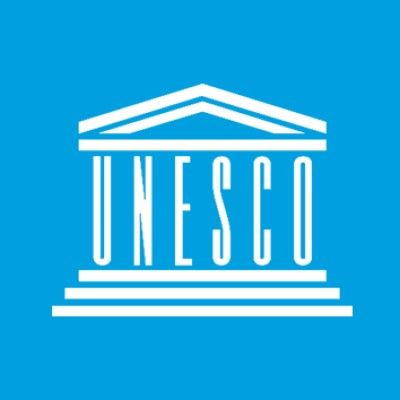Bridging the Digital Divide: Kenya's DigiSchool Initiative Expands Internet Access for All
March 18, 2025, 9:42 pm
In the heart of Kenya, a digital revolution is unfolding. The DigiSchool Internet Connectivity Project is not just a lifeline; it’s a bridge to a brighter future. Launched by UNESCO, Huawei, and the Kenyan government, this initiative aims to connect schools across the nation, especially those in underserved communities. The second phase of this project recently kicked off, and its impact is already palpable.
The DigiSchool project began with a clear mission: to close the digital divide in education. In its first phase, 13 schools were connected, reaching over 6,000 students. Now, with the launch of Phase II, 21 additional schools are coming online, promising to benefit more than 10,000 learners. This expansion is not merely about numbers; it’s about transforming lives.
At the Machakos Primary School for the Deaf, the launch event showcased the project’s potential. Here, students with special educational needs are gaining access to resources that were once out of reach. The internet is not just a tool; it’s a gateway to knowledge, creativity, and opportunity. With the right connections, these students can learn, grow, and thrive.
The Principal Secretary for Basic Education, Belio Kipsang, emphasized the importance of internet access. He painted a picture of a future where education is inclusive and equitable. In this vision, every child, regardless of their background or abilities, has the chance to succeed. The DigiSchool project is a step toward making that vision a reality.
The collaboration between UNESCO, Huawei, and the Kenyan government is a testament to the power of partnership. Each entity brings unique strengths to the table. UNESCO’s commitment to education, Huawei’s technological expertise, and the government’s vision for digital inclusion create a formidable alliance. Together, they are not just connecting schools; they are building a foundation for a more equitable society.
One of the standout features of Phase II is its focus on special needs schools. Six of the newly connected institutions cater specifically to children with disabilities. This is a significant move toward inclusivity. The project recognizes that every learner deserves access to quality education, and it’s taking concrete steps to ensure that happens.
The technology being deployed is cutting-edge. High-speed fiber broadband is the backbone of this initiative. It enables not just basic internet access but also advanced educational tools like video conferencing. This means that students can interact with experts and educators in real-time, breaking down barriers that once hindered their learning.
Imagine a classroom where students can engage with teachers and specialists from anywhere in the world. This is the reality that the DigiSchool project is creating. The potential for remote support and resources is immense. It allows for tailored educational experiences that meet the unique needs of each student.
The benefits of connectivity extend beyond the classroom. Teachers are gaining access to online resources that enhance their teaching methods. Administrators can manage educational systems more efficiently. The ripple effect of this project is vast, touching every aspect of the educational ecosystem.
As the project progresses, stakeholders are optimistic. The government of Kenya has set ambitious goals for digital inclusion, and the DigiSchool initiative aligns perfectly with these objectives. It’s a crucial part of the Digital Superhighway Agenda, which aims to connect all schools in the country to the internet. This is not just about technology; it’s about empowering the next generation.
The success of Phase I provides a solid foundation for future growth. Evaluations showed that 98% of learners felt the internet met their educational needs. A staggering 84% reported that online resources made learning more exciting. These statistics are not just numbers; they are stories of transformation. They highlight the profound impact that connectivity can have on education.
The commitment to digital inclusion is a long-term vision. Huawei’s TECH4ALL initiative plays a pivotal role in this journey. It focuses on sustainability and accessibility in the digital world. By leveraging innovative technologies and partnerships, it aims to ensure that no one is left behind in the digital age.
As the DigiSchool project continues to expand, it serves as a model for other nations. It demonstrates that with collaboration, determination, and the right technology, the digital divide can be bridged. The future of education in Kenya is bright, and the DigiSchool initiative is lighting the way.
In conclusion, the DigiSchool Internet Connectivity Project is more than just an initiative; it’s a movement. It’s about creating opportunities, fostering inclusivity, and empowering learners. As Kenya embraces this digital transformation, the world watches. The message is clear: education is a right, not a privilege. And with projects like DigiSchool, that right is becoming a reality for all.
The DigiSchool project began with a clear mission: to close the digital divide in education. In its first phase, 13 schools were connected, reaching over 6,000 students. Now, with the launch of Phase II, 21 additional schools are coming online, promising to benefit more than 10,000 learners. This expansion is not merely about numbers; it’s about transforming lives.
At the Machakos Primary School for the Deaf, the launch event showcased the project’s potential. Here, students with special educational needs are gaining access to resources that were once out of reach. The internet is not just a tool; it’s a gateway to knowledge, creativity, and opportunity. With the right connections, these students can learn, grow, and thrive.
The Principal Secretary for Basic Education, Belio Kipsang, emphasized the importance of internet access. He painted a picture of a future where education is inclusive and equitable. In this vision, every child, regardless of their background or abilities, has the chance to succeed. The DigiSchool project is a step toward making that vision a reality.
The collaboration between UNESCO, Huawei, and the Kenyan government is a testament to the power of partnership. Each entity brings unique strengths to the table. UNESCO’s commitment to education, Huawei’s technological expertise, and the government’s vision for digital inclusion create a formidable alliance. Together, they are not just connecting schools; they are building a foundation for a more equitable society.
One of the standout features of Phase II is its focus on special needs schools. Six of the newly connected institutions cater specifically to children with disabilities. This is a significant move toward inclusivity. The project recognizes that every learner deserves access to quality education, and it’s taking concrete steps to ensure that happens.
The technology being deployed is cutting-edge. High-speed fiber broadband is the backbone of this initiative. It enables not just basic internet access but also advanced educational tools like video conferencing. This means that students can interact with experts and educators in real-time, breaking down barriers that once hindered their learning.
Imagine a classroom where students can engage with teachers and specialists from anywhere in the world. This is the reality that the DigiSchool project is creating. The potential for remote support and resources is immense. It allows for tailored educational experiences that meet the unique needs of each student.
The benefits of connectivity extend beyond the classroom. Teachers are gaining access to online resources that enhance their teaching methods. Administrators can manage educational systems more efficiently. The ripple effect of this project is vast, touching every aspect of the educational ecosystem.
As the project progresses, stakeholders are optimistic. The government of Kenya has set ambitious goals for digital inclusion, and the DigiSchool initiative aligns perfectly with these objectives. It’s a crucial part of the Digital Superhighway Agenda, which aims to connect all schools in the country to the internet. This is not just about technology; it’s about empowering the next generation.
The success of Phase I provides a solid foundation for future growth. Evaluations showed that 98% of learners felt the internet met their educational needs. A staggering 84% reported that online resources made learning more exciting. These statistics are not just numbers; they are stories of transformation. They highlight the profound impact that connectivity can have on education.
The commitment to digital inclusion is a long-term vision. Huawei’s TECH4ALL initiative plays a pivotal role in this journey. It focuses on sustainability and accessibility in the digital world. By leveraging innovative technologies and partnerships, it aims to ensure that no one is left behind in the digital age.
As the DigiSchool project continues to expand, it serves as a model for other nations. It demonstrates that with collaboration, determination, and the right technology, the digital divide can be bridged. The future of education in Kenya is bright, and the DigiSchool initiative is lighting the way.
In conclusion, the DigiSchool Internet Connectivity Project is more than just an initiative; it’s a movement. It’s about creating opportunities, fostering inclusivity, and empowering learners. As Kenya embraces this digital transformation, the world watches. The message is clear: education is a right, not a privilege. And with projects like DigiSchool, that right is becoming a reality for all.

